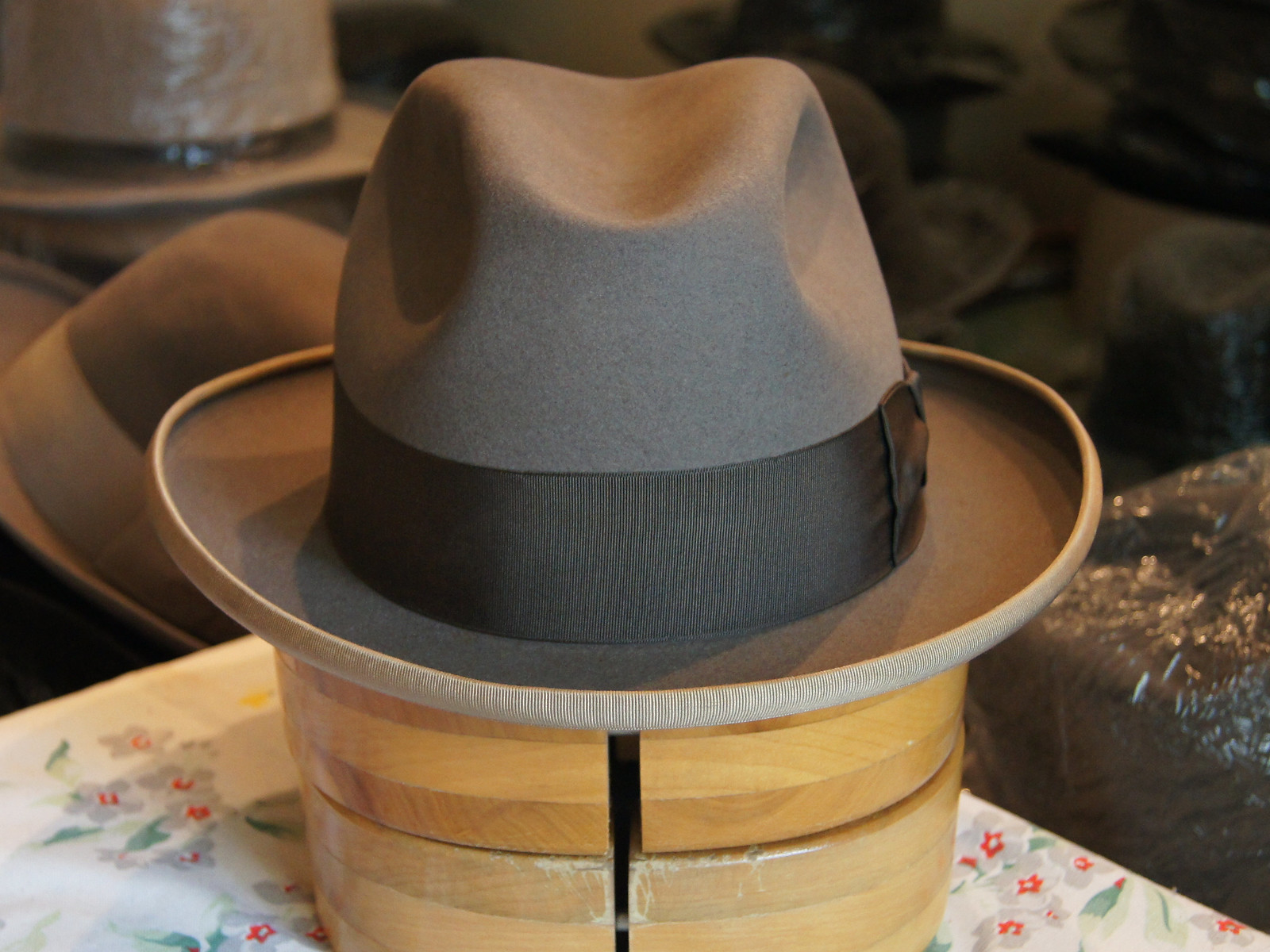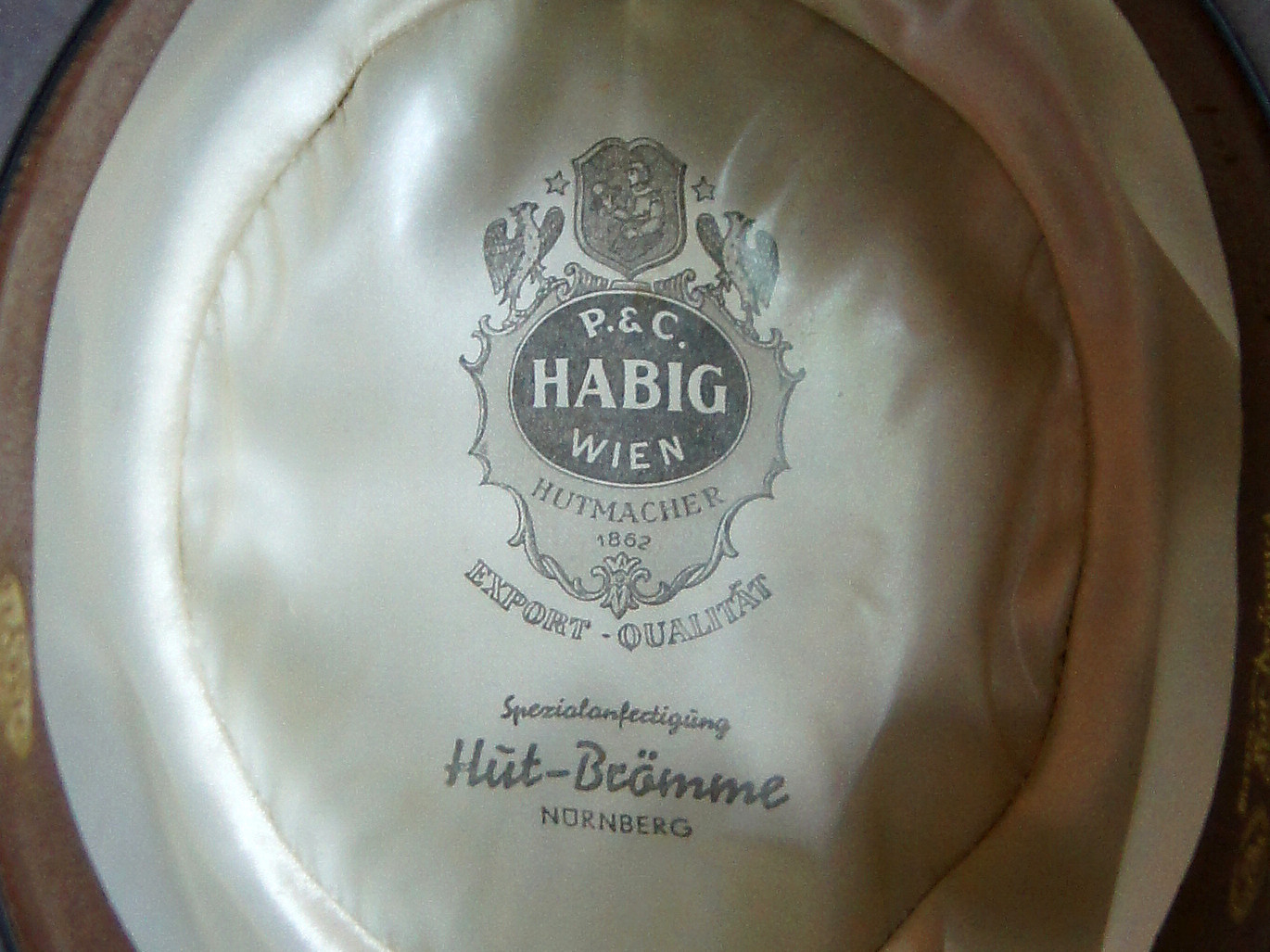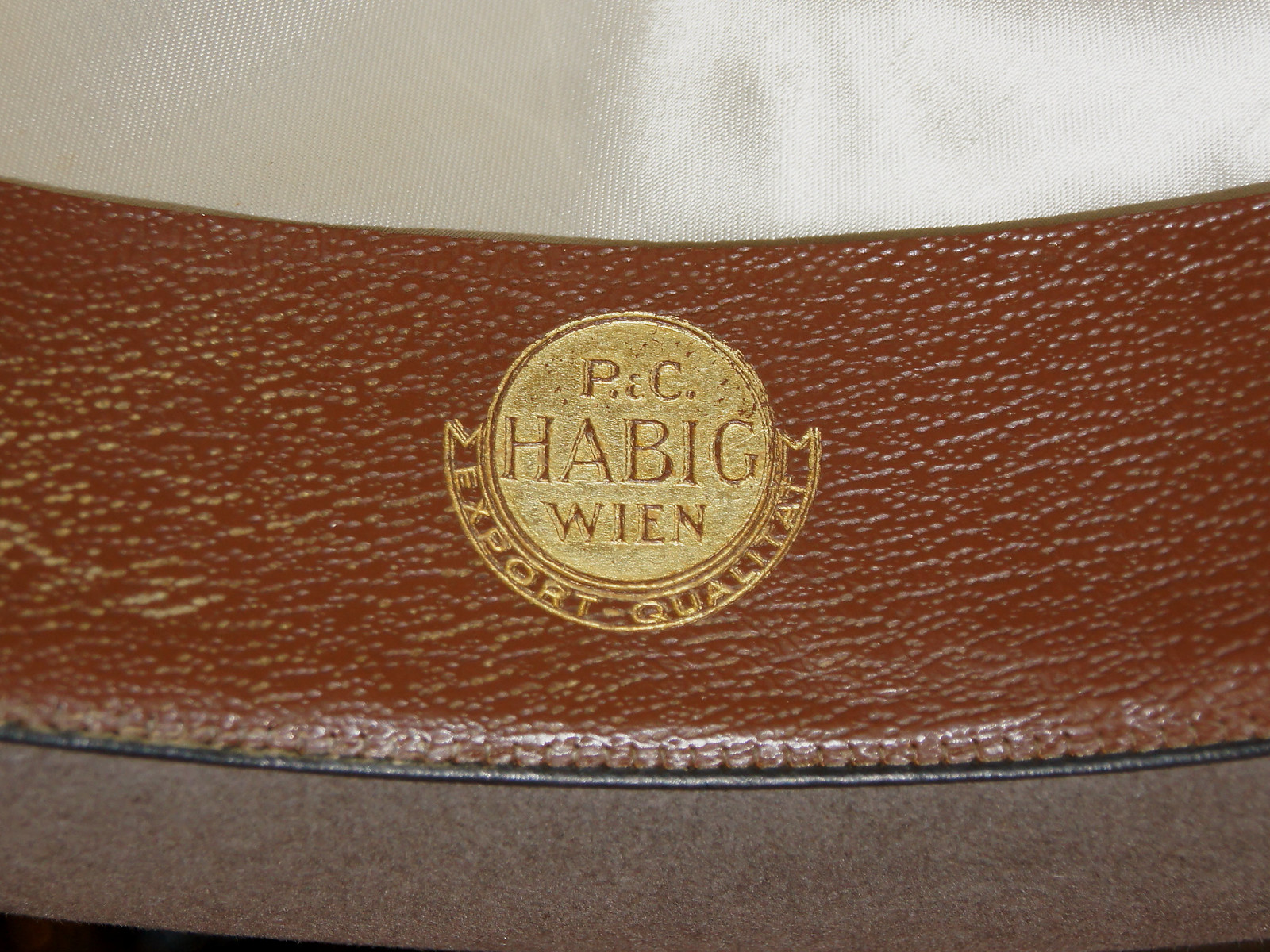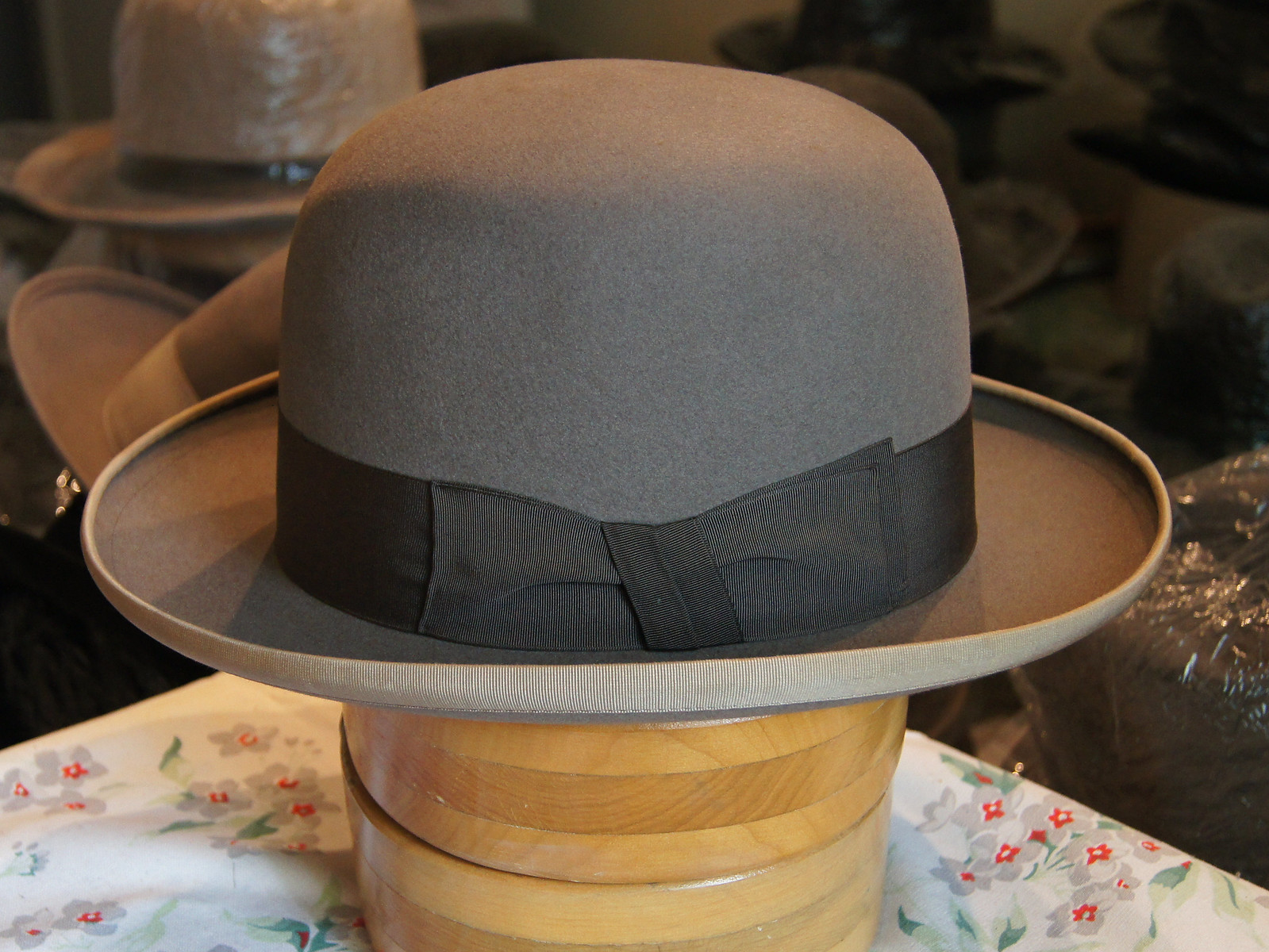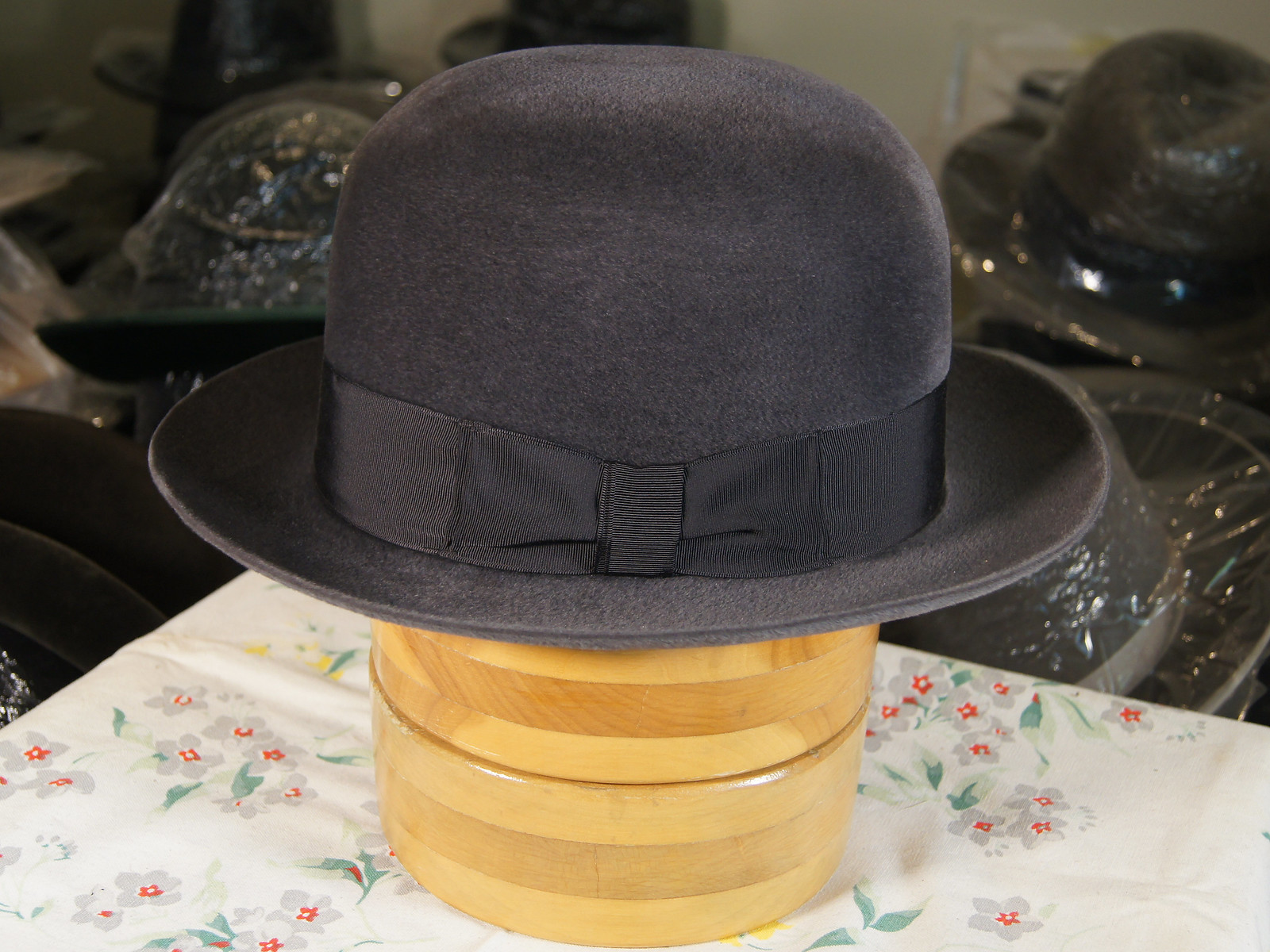- Messages
- 17,712
- Location
- Maryland
Stefan, Fantastic find! It's a real beauty and the Velour is pristine with super gloss. I really like the Brim Flange and Bow design. Also a unique sweatband cord / bow. I think "A V" could be "Alpha Velour". All the French Market "Prima" have "A V" on the Paper Label. I have a German Market "Prima" that is a Trachten style and the Paper Label has "Prima Vel.". I have photos (from an auction) of another German market "Prima" but it doesn't have a Paper Label photo.This one worked out well. I took a chance buying this one, not knowing the size. There were several member here hoping it would be theirs, but it is my size in fact.
Hückel Prima velour. Size 56 with the overwelt brim at 5,5cm (-ish) and the crown at 11cm at the center dent. Sellers' pics had it look awkward because she tried forcing the brim down like a fedora. It's not that kind of hat. A pre-war model the Germans and Austrians would likely call a "mode-hut". The felt is everything you'd expect from a pre-war Hückel. The A V on the label has me puzzled a bit. I'm sure I could find it on Steve's site, but I haven't looked yet. Anyway, here it is.











